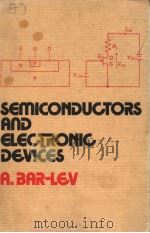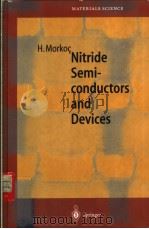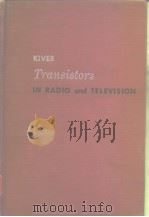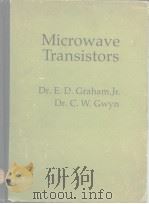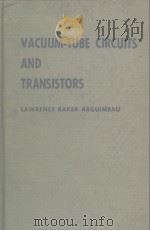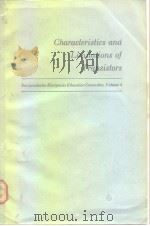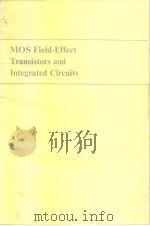《Semiconductors and transistors.》
| 作者 | 编者 |
|---|---|
| 出版 | 未查询到或未知 |
| 参考页数 | 267 |
| 出版时间 | 没有确切时间的资料 目录预览 |
| ISBN号 | 无 — 求助条款 |
| PDF编号 | 811339828(仅供预览,未存储实际文件) |
| 求助格式 | 扫描PDF(若分多册发行,每次仅能受理1册) |
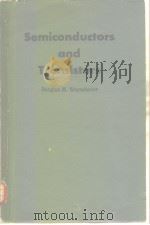
Chapter 1.Introduction1
1-1.Resistivity1
1-2.Photovoltage and Photoconductivity2
1-3.Rectification3
1-4.Photo-EMF5
1-5.Transistor6
1-6.Advantages and Disadvantages of Transistors7
1-7.Types of Semiconductors8
Problems9
Chapter 2.Currents,Fields,and Quanta10
2-1.Electric and Magnetic Fiélds10
2-2.Units12
2-3.Mobility13
2-4.Temperature and Energy15
2-5.Photoelectric Effect16
2-6.Work Function17
2-7.Barrier Existence19
2-8.Wave Nature of Light20
2-9.Quanta21
Problems21
Chapter 3.Atoms and Electrons23
3-1.Atomic Properties23
3-2.Bohr Atom24
3-3.Valence Electrons25
3-4.Electron Energy Levels26
3-5.Excited States28
3-6.Emission29
3-7.Modern Theory of the Electron30
3-8.Uncertainty Principle31
3-9.Wave Packets31
Problems33
Chapter 4.Crystal Stracture34
4-1.Ionic Bonding34
4-2.Covalent Bonding35
4-3.Crystal Lattices35
4-4.Miller Indices37
4-5.Bragg’s Law38
4-6.Mechanical Properties of Crystals38
4-7.Dislocations and Defects40
4-8.Crystal Purity42
Problems42
Chapter 5.Band Formation43
5-1.Coupled Atoms43
5-2.Electron Correlation45
5-3.Expansion of Energy Levels45
5-4.Band Structure47
5-5.Valence Band48
5-6.Conduction Band48
5-7.Forbidden Gap48
Problems49
Chapter 6.Metals,Semiconductors,Insulators50
6-1.Electron Motion in a Solid50
6-2.Motion in a Band51
6-3.Metallic Conduction52
6-4.Photoconductivity52
6-5.Intrinsic Electron Conduction53
6-6.Metals54
6-7.Insulators54
6-8.Intrinsic Semiconductors54
6-9.Conductivity and Temperature54
6-10.Holes55
6-11.Electron and Hole Motion56
6-12.Effective Mass58
6-13.Intrinsic Conductivity59
Problems61
Chapter 7.Impurity Semiconductors62
7-1.The Perfect Lattice62
7-2.Valence64
7-3.Donors65
7-4.Acceptors67
7-5.n Type and p Type68
7-6.Majority and Minority Carriers69
7-7.Impurity Density69
7-8.Resistivity70
7-9.Resistivity and Scattering71
7-10.Metal and Semiconductor Resistivity71
7-11.Conduction Procees72
7-12.Trapping74
Problems74
Chapter 8.Measurement of Semiconductor Characteristics75
8-1.Resistivity75
8-2.Drift Mobility77
8-3.Hall Mobility79
8-4.Crossed Electric and Magnetic Fields80
8-5.v×B80
8-6.Charge Motion in a Magnetic Field82
8-7.Carrier Scattering83
8-8.Hall Effect84
8-9.Hall Angle86
8-10.Hall Coefficient87
8-11.Units88
8-12.Lifetime89
8-13.Diffusion Length and Constant92
8-14.Cyclotron Resonance93
8-15.Resistivity and Type Testers96
Problems98
Chapter 9.p-n Junctions100
9-1.Junction Properties100
9-2.Photo-EMF104
9-3.Rectification105
9-4.Rectifier Uses108
9-5.Rectifier Equations108
9-6.Fermi Level110
9-7.Junction Band Diagram111
9-8.Junction Energy Levels113
9-9.Effect of Temperature114
9-10.Electrical Breakdown114
9-11.Zener Effect115
9-12.Avalanche Breakdown117
9-13.Rectifier Circuits120
Problems121
Chapter 10.Transistors123
10-1.Transistor Amplifier125
10-2.Transistor Connections126
10-3.Transistor Requirements127
10-4.Biases127
10-5.Impurity Concentration127
10-6.Base Thickness128
10-7.Impedance Amplification128
10-8.Current Gain130
10-9.Injection Ratio131
10-10.Cutoff Frequency131
10-11.Temperature Limitations133
10-12.n-p-n Transistor134
10-13.Tetrode Transistor134
10-14.p-n Hook Transistor135
Problems136
Chapter 11.Transistor Construction137
11-1.Grown Junctions137
11-2.Contacts139
11-3.Zone Refining139
11-4.Rate-grown Junctions140
11-5.Alloyed or Fused Junctions140
11-6.Point-contact Devices143
11-7.Diffused-junction Transistors144
11-8.Surface-barrier Transistors146
11-9.Other Transistor Types147
Chapter 12.Transistor Circuits148
12-1.Grounded-base Connection148
12-2.Grounded-base Phase148
12-3.Grounded-base Resistances149
12-4.Grounded-base Amplifier149
12-5.Low-frequency Response150
12-6.Grounded-base Gain151
12-7.Decibels152
12-8.Grounded-emitter Connection153
12-9.Grounded-emitter Characteristics153
12-10.Beta Current Gain154
12-11.Transistor Burnout155
12-12.Grounded-collector Connection156
Problems157
Chapter 13.Circuit Theory158
13-1.Black Box159
13-2.Resistance Characteristics160
13-3.Grounded-base Parameters163
13-4.Equivalent Circuit166
13-5.Grounded-base Stage167
13-6.Input Resistance and Power Gain169
13-7.Output Resistance170
13-8.Stability171
13-9.Typical Operating Conditions174
13-10.Approximate Formulas174
13-11.Summary175
Problems176
Chapter 14.Grounded-emitter and Gounded-collector Theory177
14-1.Grounded-emitter Equivalent Circuit177
14-2.Grounded-emitter Stage179
14-3.Grounded-emitter Current Gain181
14-4.Comparison of Characteristics183
14-5.Grounded-collector Equivalent Circuit183
14-6.Grounded-collector Properties185
14-7.Summary of Circuit Properties186
Problems186
Chapter 15.Other Circuit Reprssentations188
15-1.Resistance Representation188
15-2.Conductance Representation190
15-3.Determination of Conductance Parameters190
15-4.Relation of Conductance to Resistance Parameters191
15-5.Input and-Output Conductance192
15-6.Pi Equivalent Circuit193
15-7.Comparison of Resistance and Conductance Representatious195
15-8.Hybrid Parameters195
15-9.Hybrid Representation196
15-10.Conversion of Hybrid Parameters196
15-11.Input Resistance and Output Conductance197
15-12.Equivalent-circuit Hybrid Equations198
Problems200
Chapter 16.Amplifiers201
16-1.Cascading Requirements201
16-2.Coupling204
16-3.Fixed-bias Operation207
16-4.Self-bias Operation209
16-5.Push-Pull and Complementary Symmetry212
Problems216
Chapter 17.Switches and Oscillators217
17-1.Switch Properties217
17-2.Operating Modes217
17-3.A Simple Switch218
17-4.Large-signal Characteristic219
17-5.Load Lines222
17-6.Oscillators224
17-7.Series Resonance225
17-8.Feedback Oscillator227
17-9.Negative-resistance Oscillator228
17-10.Applications229
Problems229
Chapter 18.High-frequency Effects230
18-1.An RC Network230
18-2.Diffusion,Dispersion,and Storage231
18-3.Junction Capacitance233
18-4.Base-width Modulation234
18-5.Base Resistance236
Problems238
Chapter 19.Nontransistor Devices239
19-1.Thermistors239
19-2.Thermistor Characteristics239
19-3.Thermistor Thermometer241
19-4.Thermistor-bridge Applications242
19-5.Other Thermistor Applications242
19-6.Photoconductive Cells243
19-7.Traps244
19-8.Quantum Efficiency244
19-9.Infrared Detectors245
19-10.X-ray Detectors245
19-ll.Nuclear Detectors246
19-12.Photovoltaic Cells247
19-13.Luminescence247
19-14.Luminescent Mechanisms248
19-15.Luminescent Devices249
Problems250
Appendix251
Table A-1.Physical Constants251
Table A-2.Properties of Germanium and Silicon251
Table A-3.Radiation Wavelengths251
Table A-4.Periodic Table252
SELECTED BIBLIoGRAPHY253
INDEX255
《Semiconductors and transistors.》由于是年代较久的资料都绝版了,几乎不可能购买到实物。如果大家为了学习确实需要,可向博主求助其电子版PDF文件。对合法合规的求助,我会当即受理并将下载地址发送给你。
高度相关资料
-
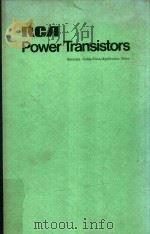
- POWER TRANSISTORS
- 1974 RCA CORPORATION
-
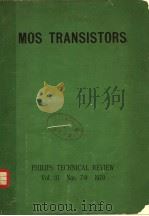
- MOS TRANSISTORS
- PHILIPS TECHNICAL REVIEW
-
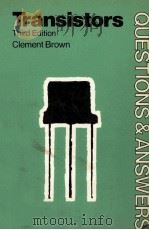
- Transistors
- 1969 Newnes Technical Books
-

- PROPERTIES AND APPLICATIONS OF TRANSISTORS
- 1964 DE DOCUMENTATION ELECTRONIQUE PARIS
-

- TRANSISTORS THEORY AND CIRCUITRY
- 1964 MCGRAW-HILL PUBLISHING COMPANY LIMITED
-
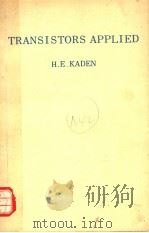
- TRANSISTORS APPLIED
- 1965 PHILIPS TECHNICAL LIBRARY
提示:百度云已更名为百度网盘(百度盘),天翼云盘、微盘下载地址……暂未提供。➥ PDF文字可复制化或转WORD
